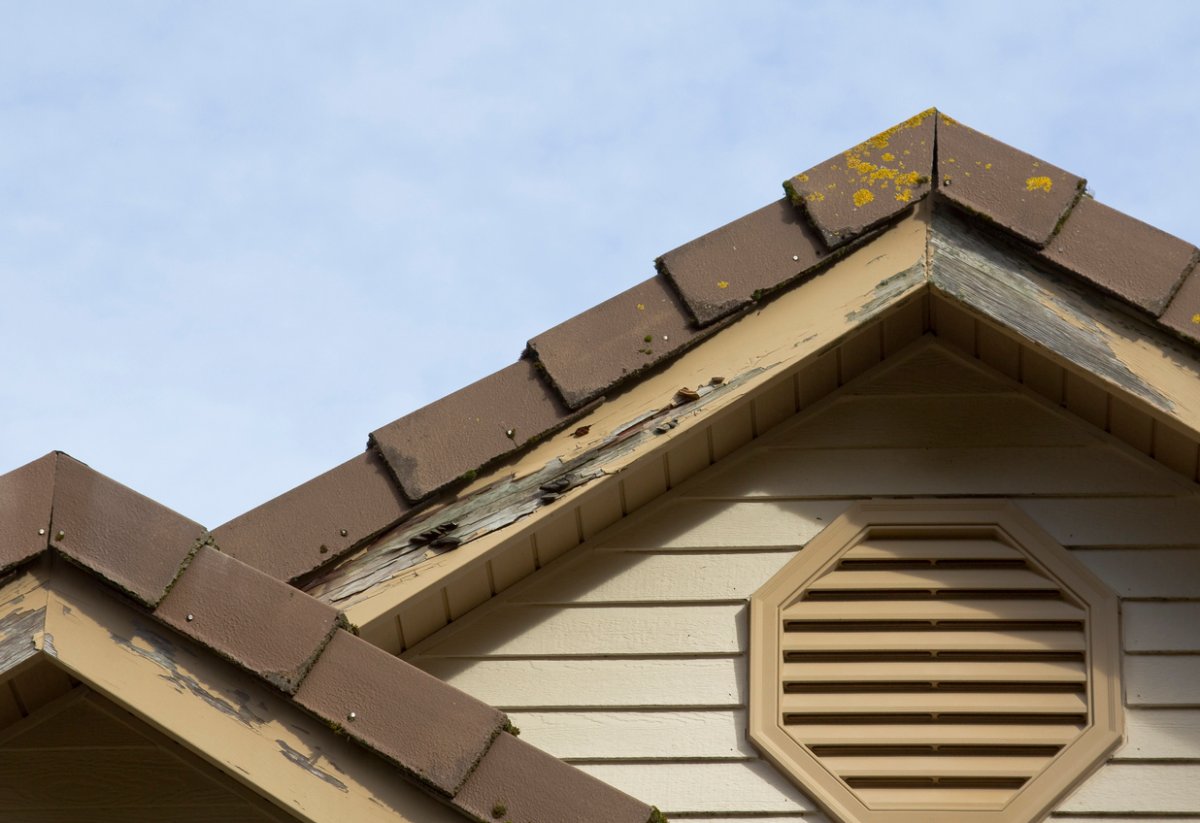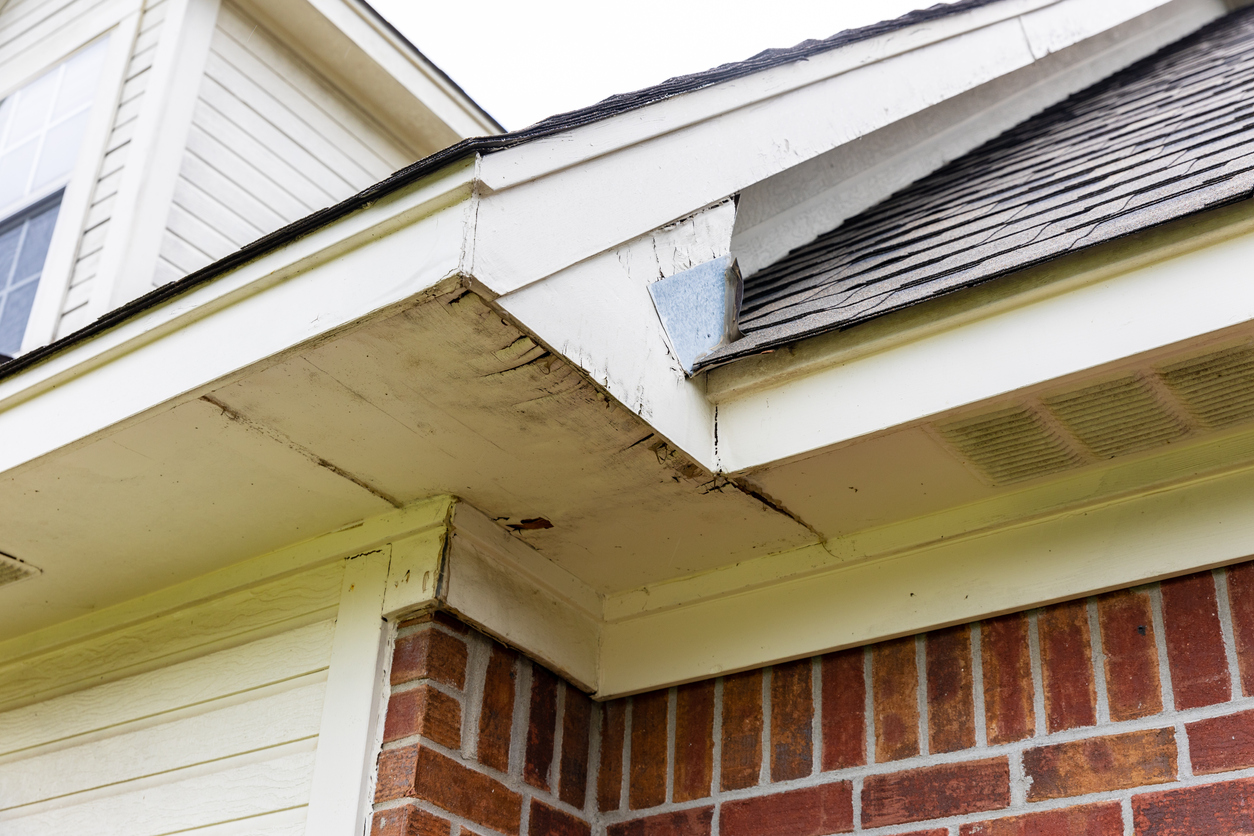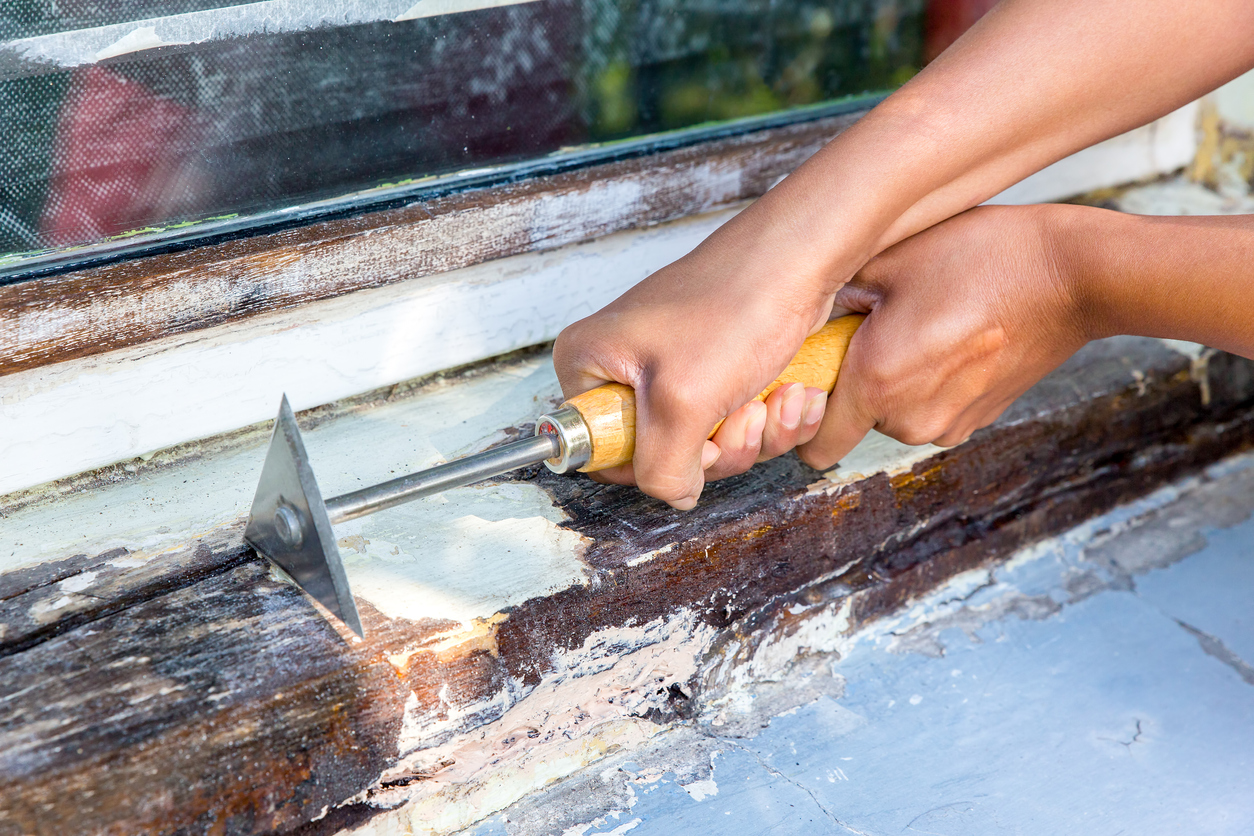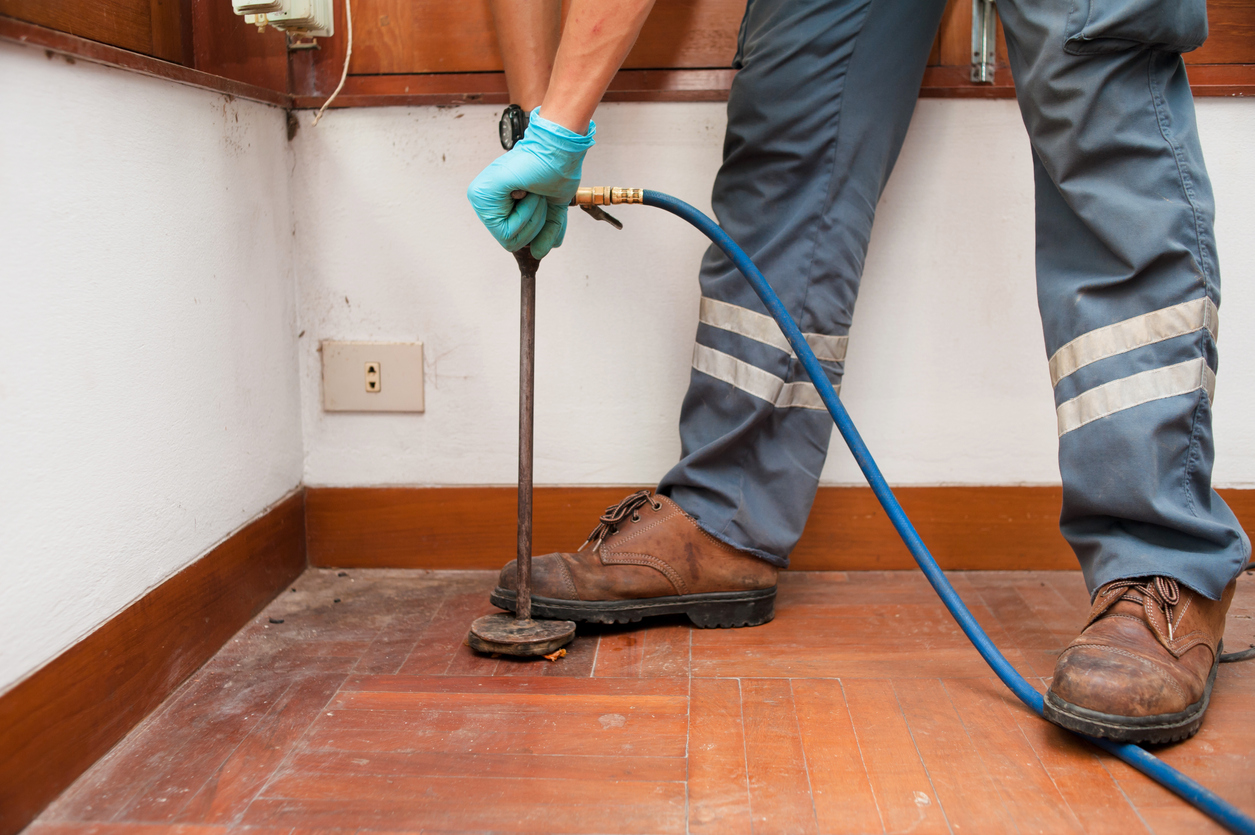

We may earn revenue from the products available on this page and participate in affiliate programs. Learn More ›
Wood makes up the structural support of many homes, so it’s important that the wood stays strong and healthy. But this isn’t always the case due to issues such as termites or rot. Many homeowners wonder “What causes wood to dry rot?” or “How can I identify rotten wood, termite damage vs. wood rot?” Although the differences between termite damage vs. wood rot may seem small, they actually vary quite a bit and can be easily identified. Termite damage often comes with evidence of actual termites, whereas wood rot rarely includes a bug infestation. For those who need help determining what is repairable, how extensive the damage is, or when to call a professional, the guide below can point in the right direction.
What does termite damage look like?
Some signs of termites are obvious, such as crumbled or collapsed wood. Termite evidence can also include buckling wood, swollen floors or ceilings, and any structural damage to the exterior of the home. It can also mimic the appearance of water damage, with peeling paint and the presence of a musty scent similar to mildew or mold.
Other signs of termites include:
- Clicking sounds in the walls;
- Dead winged insects around the house;
- Hollow-sounding wood;
- Stuck windows; and
- Evidence of swarms or mud tubes.
What does wood rot look like?
Whether a homeowner is on the lookout for wet rot or dry rot wood, any swelling or discoloration in the siding, deck, or other lumber is a good indication that the problem is wood rot. Evidence of mold or other fungi in the wood is another sign that there is a case of wood rot. However, not all wood rot is the same. A homeowner may be dealing with either dry rot, which is discolored but appears dry, or wet rot, which is softer and more outwardly degraded.

Dry Rot
Wood that has dry rot (also known as “brown rot”) typically harbors fungi below the surface. Although the surface of the wood may look dry, the cellulose inside is being destroyed and causing the wood to shrink into small cube-shaped pieces. This process is known as cubical fracture, and it can quickly damage the wood. Types of wood damage like this spread rapidly, especially when the temperature is anywhere from 65 to 90 degrees Fahrenheit.
Wet Rot
Wet rot occurs when untreated wood is consistently exposed to water or high levels of moisture. Since the wood is moist, it attracts a fungus that can easily feed and grow. For those wondering, “What does rotting wood smell like?” the answer is, at least in the case of wet rot, it likely smells damp and musty. Several signs indicate that there is wet wood rot, from cracked or softened wood to visible fungi.
How to Tell the Difference Between Termite Damage and Wood Rot
At first glance, termite damage and wood rot can appear extremely similar. And although both lead to the deterioration of wood, the way in which the wood is compromised is often different. For example, with termite damage, there is more than likely going to be evidence of the actual termites along with problems with wood siding or other structures. Wood rot, on the other hand, is the result of growth of mold or fungi.
| Termite damage | Wood rot |
| Signs of termites or colony | Signs of fungi or mold spores |
| Interior of wood contains tunnels that resemble a maze | Rotten areas are extensive and easy to spot |
| Wood sounds hollow when tapped | Wood has shrunk in size |
| Tiny holes in furniture or walls | Pressure leads to crumbling or dust; wood is soft to the touch |
What to Do When You Find Termite Damage
So you’ve spotted the damage and determined there are termites. Now what? In this case, it would be most helpful to call one of the best termite control companies, like Terminix or Orkin to check out the damage and come up with a plan to repair it. A termite expert can figure out whether it’s old termite damage vs. new and will know how to repair termite-damaged wood so that the structure of the home is sound. Plus, they’ll have the proper tools, equipment, and experience to take out termites and keep them from returning, so there won’t be a need to deal with this issue again.

What to Do When You Find Wood Rot
Once wood rot is identified, it’s time to go into repair mode. First, any rotten areas will need to be removed in boards or joists and the space filled with wood filler or a wood patch. If an entire board or joist is rotten, an experienced contractor can remove and replace it. If the wood rot is just beginning to show, it may be possible to repair it by drying it out and applying wood treatment.
Can I Reverse Wood Rot?
For homeowners wondering whether they’ll know how to tell if wood is rotten, an easy way is to stick a screwdriver inside a board, and if it easily enters, it’s safe to assume the problem is rot. If the screwdriver cannot pass through wood, there’s a chance a contractor can treat the wood and bring it back to life. Otherwise, the rotten wood will not be salvageable and instead will need to be replaced. If the wood still stands a chance, it will need to be dried with a dehumidifier, then have a wood preservative with copper or borate applied. Once the treatment has been applied, it’s wise to check on it frequently since it’s at an increased risk of rotting in the future.
Can a house collapse from dry rot?
If not detected in time, dry rot can lead to serious structural damage in the home, such as the collapse of floor joists. Although this may not lead to a complete collapse of a home, it can cause certain areas to buckle or sag. If this happens, a specialist from one of the best foundation repair companies will need to inspect the areas and formulate a plan to replace the joists. This is where wood rot vs. termite damage expenses come into play, since a small portion of a home that’s affected by termites will cost much less to treat than extensive wood rot in floor joists.
How to Prevent Termite Damage
The best way to keep a termite infestation from occurring in a home is to eliminate excess moisture and prevent termites from accessing their food source. This process can start with looking for and repairing any leaky faucets, air-conditioning units, or water pipes, as well as sealing entry points, moving standing water away from the home, and keeping vents clear and open. To remove termites’ food source, it’s best to relocate debris away from the home and keep firewood, paper, or lumber out of any crawl spaces and away from the foundation.

How to Prevent Wood Rot
The good news is there are several steps a homeowner can take to help prevent wood rot. It may be surprising, but both dry and wet rot can be caused by excess moisture, so minimizing it is imperative. Homeowners can start by looking for any cracks around exterior doors or windows and sealing them with caulk to keep moisture at bay. Or, if they spot old caulk that’s broken or peeling, they can scrape it away and replace it with a new application for better protection. If a home has gutters, the homeowner can also make it a priority to clean them twice a year to keep clogs from forming, which can lead to water running down the side of the home.
Other prevention methods include using dehumidifiers and exhaust fans in particularly humid areas of the home, covering exposed entry doors to keep water away, and sweeping standing water away from exterior walls.
How fast will untreated wood rot?
If left untreated, wood can take as little as 1 month or as long as 3 years to rot, depending on the conditions it’s exposed to. If the wooden area is untreated and sitting in water, exposed to hot or humid air, or is near the ground, it will likely start to show signs of rotting by 6 months. Wood that is uncleaned or regularly holds water can rot in 1 to 3 years. Regularly treating, staining, painting, or pressure-washing wood is the best line of defense against rot if a homeowner hopes to maintain it over time.
Sources: Mr. Happy Home
